-
 TransAnatolie
TA0602 TransAnatolie
TA0602
- 15 Day
Turkey Cultural Historical Heritage Tour
-
Cappadocia, Black Sea and Eastern
Anatolia-Turkey Exploration Tour



Day
1: Europe-Ankara
Arrival in Ankara. Transfer to the 4 star Hotel with high QoS and for a welcome drink, dinner and overnight.
Day
2: Ankara-Hattusas
(Hattusha)-Amasya (336 km)
After breakfast, visit to the
Museum of
Anatolian Civilizations, where the 1995 World Fair took place. We continue with
the visit in the old part of Ankara to the beautiful wooden palaces dated from
the Ottoman period, to the Ethnographical Museum Zeger Pacha’s Kanagi and to
the Spices Market. We don’t forget to take some pictures of the
Atatürk Mausoleum.

Lunch will be taken in the Hacibey restaurant,
the most famous Döner Kebab in Ankara, next to the Deputies Quarter.
In the afternoon, we head towards
Hattusas,
the Hittite Capital with its city-walls, its Lion Gate, its underground Gate, its
King Gate and its Hittite Pantheon. We finally reach Yazilikaya.
Let’s admire the sunset on the city of the
Amesis Amazons, place of birth of the famous architect-geographer Strabon: Amasya.
Let’s walk along the Green River, admiring the wooden houses and the graves
cut in the rock and the castle. We end our day at our hotel
**** with a welcome drink and a very nice delicious dinner.

Day
3: Amasya-Niksar-Ordu-Giresun (320 km)
After breakfast, we leave our hotel for a new
visit of Amasya, where we can admire the Mosque of the Beyazit Sultan, the
Burmali Minare Mosque , Darüssifa-Bimarhabe, the Mosque of the Blue Medrese
Gök, the Archaeological Museum, a few other museums, the Ethnographical Museum
of Hazeranlar Konagi.

Why not a few pictures of the graves cut in
the rock, of the historical bridges, of the fountains, of the wooden houses
along the Green River and of the Torumtay Mausoleum, built in 1266. Lunch in Amasya.
Then we drive along the Green River up to
Niksar, admiring this amazing landscape through a winding road across the Bridge
Mountains. In Ordu starts the region of the nuts
cultivation and we can admire nice views on the fields and the sea.

Overnight is planned in the
"*** Hotel in Giresun, where numerous cherry trees grow. Their sweet cherries
are also named ‘Birds Cherries’. Following the legend, the Roman General
Lucullus taking over the city in 69 before JC, would have introduced the
cherrytrees cultivation in Europe.
Day
4: Giresun-Trabzon (130 km)
After breakfast, head towards Trabzon
admiring on the way the coast of the Euxine Sea.
In Trabzon, we visit one of the main
interesting parts of Trebizonde: the Church of Aya Sofia with its bright
frescos.

Aya Sofia was at first a church in a form of a
cross transformed into a basilica with 3 naves built during the domination of
the Manuel Commene I dynasty in the 13th century. Thereafter it was enlarged and lifted several
times.

The Southern side of the church has a very
beautiful portal embellished with wonderful sculptures, mainly friezes depicting
Adam and Eve, mythological figures and flower patterns. The most beautiful
frescos can be found in the narthex (entrance portal). Here are depicted
miracles of the New Testament such as the Christ walking on the waters, the
miracle of the loaves and fishes, and the healing of the Blinds. End of day we arrive at our hotel
"***
for dinner and overnight.



Day
5:
Trabzon-Macka-Gümushane-Bayburt-Erzurum (342 km)
After breakfast, we first visit the Sumela
Monastery, cling to the hill and located next to the Altindere Park and to the
Golden River with the same name. The name Sumela is a deformation with
shortening of the Greek ‘Panagia Theotokos toumelas’, the very Holy Mother
of God from the black mountain.

That Monastery, now deserted and difficult of
access, is located at 1,200 meters high. The last 250 meters have to be done by
foot or with a van. It is remarkable by its impressive frescos of
the Church built in the rocks and is part of the list of monuments of UNESCO.
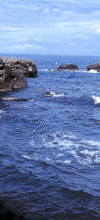
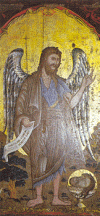
We continue our trip through the Bridge
Mountains, driving up via Torul towards Gümüshane (1,250 m) and Bayburt (1,600
m) across the Kop-Gecidi (2,302 m) towards Erzurum, at 1,950m.
Lunch in a typical restaurant in Bayburt, at
the foot of the Bayburt Burch, on the Coruh River.
In the late afternoon, in Erzurum-Karin named
‘the Roman Country’ by the Seldjoukids, we visit the Great Mosque with the
three Kumbets, the School of Astronomy and Medicine of the Koran with its twin
minarets. This one is representative of the oriental art: patterns and tiles
made of turquoise earthenware. It was built by the daughter of the Seldjoukide
Sultan Aladdin Kaykubat. We still are in Central Asia…
We finally arrive in our hotel ****,
wintersports resort on the Palandöken Mountain for our dinner and overnight.


Day
6: Erzurum – Ani – Kars –
Dogubayazit (434 km)
In the morning, after breakfast, we head
towards the Transcaucasian to Ani.
Between Pasinler and Horasan, we make a stop
to admire the Cobandebe Bridge, the most beautiful bridge in the world, built by
Mimar Sinan, contemporary and friend of Michel-Angelo, and Master-Architect of
Suleiman the Magnificent.
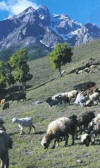
We follow the Aras River for about 140 km. Ani
is located 45km east from Kars and 248km from Erzurum on the border between
Turkey and the Armenian Republic. This city is located on an important
commercial road and has expanded to finally become the capital of Armenia in
961.
At that time, there were more than 100,000
inhabitants and thousands of churches.
The earthquakes and wars against the
Byzantine, the Turks and the Mongols put an end to this prosperity age. The
earthquake of 1319 was the end of the city. The ruins of the deserted city were found back
just after the end of the 19th century. We can still find many ruins of Armenian and
Seldjoukide monuments gathered in a limited area: the big Cathedral, the Church
of the Savior, the Church of St Gregory, the Mosque of Honentz, the Seldjoukide
Palace with its harem and selam, the Turkish bath (hammam) and the Seldjoukide
market.
After lunch in the restaurant Ocakbasi in Kars,
known for its oriental specialties, we have the possibility to take pictures of
the Cathedral of the Apostles and the Castle of Kars.
We follow our trip towards Agri (or
Dogubayazit) admiring on the way the impressive landscape of the Ararat Mountain
(5,165m) and of the small Ararat Mountain (3,896m). This name ‘Ararat’ is
mentioned several times in the Old Testament: the Book of Genesis (8,4) mentions
the episode of the grounding of the Noah’s Ark after the fload on the Ararat
Mount.
In the Book of Kings, we can read how the
murderers of the Assyrian King Sanherib, the administrator of Jerusalem, ran
away towards the Ararat Mount. In addition, in the Book of Jeremiah, during the
campaign against Babylon, the name ‘Ararat’ is mentioned as an ally of the
Israelites.
Ararat is another form of the Acadian name ‘Urartu’.



Everything is impressive in this landscape:
land tortoises, eagles, partridges, hawks, numerous species of flowers and
plants, foxes and sheep make up an animal and floral richness on the hillsides
of the Ararat Mount. End of day, we arrive at our 4 star hotel for dinner and overnight.
Day
7: Dogubayazit – Van (152km)
After breakfast, visit to the spectacular
Ishak Pacha Palace, located 7km far from the city, at the foot of the Ararat
Mount.

 At that place, a monument Urartu already
existed in 1,000 before JC, which was restored in 1784 and embellished to become
a palace fortified by the Ottoman Empire Ishak Pacha. This palace was built in
different styles, the most important being Osman Baroque from the 17th
century. Once built, Ishak Pacha made cut off the hands of the architect to
prevent him from building such beautiful palace for another person. Without the terraces, this palace is 115m long
and 50m largen, includes 336 rooms distributed on 2 floors and reminds you of
the Tales from the Turkish Nights. At that place, a monument Urartu already
existed in 1,000 before JC, which was restored in 1784 and embellished to become
a palace fortified by the Ottoman Empire Ishak Pacha. This palace was built in
different styles, the most important being Osman Baroque from the 17th
century. Once built, Ishak Pacha made cut off the hands of the architect to
prevent him from building such beautiful palace for another person. Without the terraces, this palace is 115m long
and 50m largen, includes 336 rooms distributed on 2 floors and reminds you of
the Tales from the Turkish Nights.
Lunch in Dogubayazit and start to Van (1,750m)
via the Tendurek Pass (2,644m).
Before arriving in Van-Tuspan, we make a stop
at the Muradiye waterfalls, a patch of paradise next to Van, located at 1,700m
high on the shore of the largest lake in the country, where we can admire many
Armenian churches. The old city of Tuspa was founded by the Ourarit in the 9th
century before JC. The Kingdom of Urartu included a large part of the
Middle-East and that civilization reached its apogee between 900 and 600 before
JC.
This period was followed by a decline,
provoked by the war against the Assyrians and the invasion of the Scythians and
the Medes. Alexander the Great ruled this area for some time Then, after a Persian period, this territory
was rules by the Armenians. Van became a Byzantine city and was destroyed
by the Mongols in 1387. Persians and Osmans fought to get the
domination on this territory. Finally, the Osmans developed the town.
Arriving in Van, we visit the fortress,
accessible via a stair with 1,000 steps from which we can admire the lake at
sunset.
The founder of Urartu, Sardur I, built here in
the 9th century, a fortress on a chalky crest of 1,000 m long and
100m high, to protect himself from the Assyrians. A grave with several urns were found during
excavations at the foot of the northern side. On the southern hillside of the fortress, we
can discover funeral rooms cut in the rock for Ourart Kings. In those graves, we can find Rupestrian
inscriptions engraved in cuneiform characters by the Ourart Kings and trilingual
inscriptions (in Babylonian, in Persian, Achemenide and in Media) done in the 5th
century by the Persian King Xerxes, who says: "Xerxes, the Great King of
the Kings".
We dine and overnight
at our high QoS Hotel (4 star) in Van or Urfa depending upon the
conditions at the time of concern.

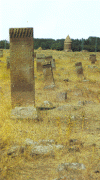
Day
8: Van (100 km)
After breakfast we make a stop in a leather
cooperative to get to know the art of Eastern Turkey. The Kilims of Van are
famous for the Turkish-Kurdish patterns and for the Armenian and Persian
drawings.
We continue to the Citadel of Cavustepe
located on a hill at 28km south of Van, which is a good example of the
architectural art of the Ourart civilization. Two different fortresses can be distinguished:
the upper fortress and the lower fortress. In the upper part, we can find the remains of
a temple, while in the lower part are the ruins of a palace, a complex of
temples, graves of prices and a stock of provisions with 30 barrels on which we
can still see the measures in cuneiform characters. This whole would have been
the fortress ‘Sardurihurda’ of the King Sargon II in the 8th
century before JC.

Lunch will be taken on the island of Akdamar,
4 km far from the shore. This now desolated island was a religious centre 1,000
years ago and was the seat of the Armenian patriarchate for centuries. We can
also admire the Church of the Holy Cross, one of the most beautiful Armenian
churches we could see. This Church was founded by the King of Vaspourakan Gaguig
Ardzrouni (904-937) and is particularly well-known for the sculptures of the
outdoor walls, where we can find mostly representations of the Old and New
Testament such as: Adam and Eve, the Noah history, the Sacrifice of Abraham,
Samson, David against Goliath, the Hebrews in the blazing fire, Mary with Jesus
and the Christ on his throne.
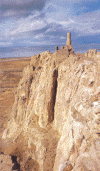

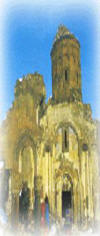
The reliefs of the abbassid Calif Muktadir
show us an exceptional mix of Christian and Islamic art. That church was widened
several times over the centuries, with for example a chapel on the North, a
large porch and a church tower.
Today, the restaurant Deniz from Gevas has
prepared us an unforgettable picnic.
At the end of the day, at sunset, we make a
stop to visit the Seldjoukide necropolis and to admire the charms of a Turkish
princess. Eventually we go back to our hotel in Van for
dinner and overnight.


Day
9: Van – Tatvan – Biltis – Silvan
–Tigris – Hassuni – Diyarbakir – Mardin (451km)
After breakfast we leave Van for a diversified
day and we drive to the south of the lake via the Kuskunkiran pass (2,234m)
towards Tatvan at about 145km far away. By going along the valley of the river
watering Bitlis, capital of the Turkish tobacco located in the middle of a fresh
oasis, we reach the famous Bridge of Malabadi built in 1146 by the Artukides on
the Batman Suyu, one of the affluents of the Tigris, love of Euphrates.
Lunch is planned to be taken in
Silvan-Tigranokerta, built during the Assyrian period and visited by Alexander
the Great. This city was developed by the King Tigran the Great and is built on
the old site of Martyropolis, founded by the Bishop Marutha in the late 4th
century. This name was given in memory of the 40 Christian martyrs executed
during the second period of the Persian Kingdom. Constantine the Great restored
the Silvan Castle to use it as a military garrison.
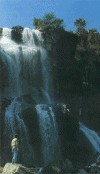
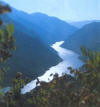
Worth to note also that during World War I, Mustafa Kemal Atatürk
was the commander against the war with the Russians and captured the cities of Mus and Bitlis
back from the Russians.
After the lunch taken with the burgomaster of
Silvan, we visit the Mosque of Selhattin Eyyoubi, the destroyed minaret, the
Church of Kildan, the Museum of Atatürk, the Caves of Temtemburg, Hamido, the
numerous troglodyte houses (+/- 300), the Castle of Hassuni as well as fountains
and watermills. The restoration of this site was paid by the EC included in the
protection of monuments.
Arriving in Diyarbakir, we can admire the
impressive walls built with black basalt, which are one of the most beautiful
types of military architecture of the Middle Age. The foundation of those walls, 5,5 km long
having a fish shape, date back from the Roman period (349 after JC). We don’t forget to take pictures of the
Tigris Delta and of the bridge over it.
This bridge was built by the metropolite Jean
Slara in 512. From there the Tigris was only navigable at that time with "keleks’
(small boats made of pumped up animal skins).
Our 4 star hotel is at
your service in Diyarbakir
or in Mardin for dinner and overnight.


Day
10: Mesopotamia: Mardin – Urfa – Harran – Kahta
(408 km)
After breakfast we walk around the town of
Mardin, which is a poetic city located at 1,300 m high on a hill topped by a
citadel. It was known at first as Marida and built on the rocks. But it has
since then lost its population of Catholic Armenians.
According to the English historian Arnold
Toynbee, this would be the most beautiful town in the world thanks to its
typical Arab architecture.The small streets of Mardin display highly
decorated houses with chalky stones with a typical arab style. The medrese of
the Sultan Isa Bey (1385) is one of the most important sites of Mardin. This
medrese is a mosque with a school of astronomy, medicine, Coranic containing a
door decorated with wonderful bas-relief.
From the Medrese roof, we have a beautiful
view on the city and on the plains of Mesopotamia. After the visit to the Big
Mosque, we head towards Deir-Az-Zafaran or Deyrulzaferan, which is located in
the middle of vines and gardens in an inhospitable landscape.
The majority of the Syrian-Orthodox
patriarches is buried here. Until 1933, this monastery was also the siege of the
patriarcate, now transferred to Damas. It was founded at the time of the ancestors of
Mary and Ananie in the 6th century.


Lunch in Urfa, the old Edesse, historical city
of the bible where Abraham, Job, Jacob and even St Gregory lived. The most well-known restaurant of Edesse,
named Göl, with its typical Mesopotamian dishes, is in the Abraham garden.
We visit the houses of Abraham in Urfa named
Ursu, Orkai and Edesse. It is said that the Assyrian King Nemrut had a
dream in which it was mentioned that he would have to give his kingdom to a
person born during the year. Therefore he ordered to kill all newborn childs of
the year as well as pregnant women.

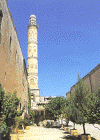

Nona concealed her pregnancy and hid her son
Abraham in a cave, where he lived in until he was 7. Once grown up, Abraham
fought against Nemrut but was trapped and condemned to be burnt at the stake.
Then God intervened and transformed fire into water, sparks and ashes into
carps. This water now flows in 2 ponds where Holy
carps are swimming.
Edesse played also an important role during
the first Christianism centuries as it was named the ‘City of Apostle St
Thomas’ and was the centre of the Armenian Christendom as well as the home of
the oriental Syrian Church.
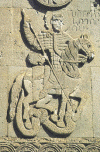
We know also the legend of the King Abgar from
Edesse and of ‘Mandylion’, a Jesus icon created miraculously: when Abgar was
suffering from leprosy, an ambassador was sent to Jesus to ask for healing.
Jesus dried his forehead with a cloth (mandylion) which was given to the
ambassador. This cloth, found back in 544, was hidden in a wall of the city and
became the priceless possession of Edesse. In 944, this relic was transferred to
Constantinople and was then stolen by the Crusaders in 1204 to be brought back
to the West, where it disappeared. For the orthodox Christians, this icon
represents the real face of Jesus.
At the end of the day, we arrive in Harran,
the warmest spot in Turkey but also one of the most picturesque villages in the
region. This city, where Abraham lived during his trip
towards Canaan, is also considered traditionally as the place where the old
Testament was written. This village, located at the crossroads of the
caravans, was an important trading place with a large international traffic and
had also a significant religious activity.
The Mesopotamian, Greek and Roman divinities
were venerated over there. This era ended in the 13th century
when the Mongols razed the city. We can admire there the typical houses (Trulli)
ant-hill shaped and built with clay, with a roof as a painted dome. They were
barns permitting to keep foodstuffs in a cool place in the summer and in a hot
place in the winter. Harran was surroundered by a wall, which is now in ruins
but which is still recognizable with its 7 doors to get into the city.
After that visit, we head towards our final
destination Kahta at the foot of Nemrut Dagi and towards our hotel Nemrut ***,
for a welcome drink, dinner and overnight.
Day
11: Kahta – Nemrut Dagi – Kahta –
Antioche (351 km)




Today we leave early with the bus, warmly
dressed to visit one of the most outstanding sites of our trip: Nemrut Dagi. The
sculptors of the Sovereign of Commagen, Antiochos, built an impressive sanctuary
on this huge plateau. And as Antiochos was seeing himself as a god, he added his
own effigy to the unity.

It is better to contemplatz this place at
sunrise, when the status are well lighted up.
The funeral monument of Antiochos I (69-36
before JC), at the top of the mountain Nemrut (2,150m), was built by this King
for himself and his close family.
Antiochos was descented by his father
Mithridate from the King of Persia Darius and by his mother Laodike from
Alexander the Great.

Commagen was a buffer region between the
Greek, the Roman and the Persian properties, which explains the multi-cultural
character of religious expressions.
Excavations were carried out on this mountain
by the German engineer Sester in 1881, which enabled to bring to light the huge
statues.
This tumulus, 160 m high and 150m diameter
is made of 2 terraces:
The Eastern
Terrace: we can find statues of gods, from 8 to 9 meters high, in
a sitting position with the back turned towards the tumulus. They are very
well preserved, except the majority of the heads, which are missing.
However, 2 heads are still intact. The representation, from left to the
right, is as follows: Apollo, Mithras, Helios, Hermes (light), Tychne
(fertility), Zeus, Oromasdes (creator), Antiochus I, Heracles, Verathragna,
Artagnes (power and courage), every statue with a lion and an eagle as
protective animal.
The Western
Terrace: the statues of the gods are placed in the same order as
on the eastern terrace but their state of preservation is worse. Only heads
lying down on the ground are still intact. This terrace has no altar. The
two lions on the terraces are the oldest representations of the horoscope in
the world: they wear a half-moon and 19 stars around their neck, including
the 3 largest in conjunction symbolizing the planets Jupiter, Mars and
Mercury.
Then, we leave towards Antioch, where we will
appreciate Arab specialties during lunch.
In 307 before JC, Antigone founded Antigonia,
which was supplanted seven years later by another city founded by order of
Seleucus I Nicator, general of Alexander the Great. This city named Antioch
expanded very rapidly, so as to become one of the most prosperous and powerful
cities in Asia Minor. It was even the 3rd city in the Roman Empire
and then became the centre of Christendom at the time of Apostles Peter and
Paul.
In Antioch we visit the Caves of Peter, an old
cult centre in the rocks, used by the Christians as a prayer place. The
Archaeological Museum displays interesting architectural achievements,
exceptional Roman sculptures and mosaics famous throughout the world.
Dinner and overnight
is our 4 star hotel.
Possibility to do evening walls in the typical
streets of Antioch along the Orante River.




Day
12: Antioch – Alexandrette – Tarse
– Gülek – Tyana – Nigde – Nevsehir (479km)
After breakfast, we leave Antioch towards
Daphne, where the nymph Daphne pursued by Apollon, was transformed into a bay
tree. We finally arrive in Tarsus, birth place of St Paul, going through Issos,
where Alexander the Great and Darius III met.
We visit the Well and House of St Paul before
having lunch in the surroundings and walking to discover this Holy place.
Then we head towards Cappadocia going through Gülek, Tyana and Nigde, garrison place of Alexander the Great. We visit the
Tyana aqueduct, the Roman swimming pool, the Great Mosque of Nigde, a very
delicate city dated from the Seljuks period with the Princess Mausoleum.
We continue towards Nevsehir.
At the 4 star hotel of high QoS we have buffet dinner and
overnight.
Possibility to do a tour in hot-air balloon in
the morning upon reservation (+/- 140€ per person).


Day
13: Cappadocia (80km)
The whole day is dedicated to the discovery of
this unique region. The wind and the violent climatic forces have
carved curious characters out of tuff. Seeing the "Fairies" chimneys
looks like a lunar plateau.
We visit the open-air museum in Göreme, with
its churches in the rocks, the Pigeons Valley and Uchisar. We follow by the visit to a carpets school and
store as well as to onyx and leather workshops. Lunch will be taken during those visits.
Dinner and overnight at our hotel ****.
Possibility to attend an evening with
traditional dances (+/- 27€).
Day
14: Cappadocia: Roses Valley – Pasabaga
– Underground city of Saratli – Pizze Tower in Aksaray – Acemhöyük –
Salty Lake – Ankara (330km)
After buffet breakfast, we leave to discover
another aspect of Cappadocia with the Roses Valley, the Camel Valley, the Virgin
Mary Valley, Pasabag, a part of the Zelve Valley, the impressive underground
city of Saratli, dedicated to Simone and Jean Vandelft, the Minaret Egri of
Aksaray, Pizze of Turkey and we finally arrive in Acemhöyük, the main capital
of the Hittite civilization.
Lunch with local inhabitants in Acemhöyük.
Back to Ankara, we drive along the Salty lake
with its salt crystal, its ducks, its wild geese and its rose flamingos. Dinner and overnight at our
4 star hotels.
Day 15: Ankara – Departure
After breakfast, transfer to the airport.
Pricing
Inclusive
- 15 days, 14 nights, full pension in 4*
charming hotels, (dinner on the 1st
evening, breakfast on the last day)
- Minibus for Sumela, and Nemroud Dag,
cruise on the Van Lake,
- All admission fees to the visits
planned,
- Services of TransAnatolie Tour Professional
Guide,
- Transportation in Turkey (403
Mercedes bus or minibus, or a Mercedes Sprinter/WW Wolt,
- and lunches in
restaurants.
Exclusive
-
Drinks in hotels and restaurants
-
Optional visits, tips
-
Flights Europe/Turkey/Europe
-
Insurance,
-
Airport taxes.

Acemhoyuk
Top|
Further
Information|
Reservation |For
Pricing Click Here
|


 TransAnatolie
TA0602
TransAnatolie
TA0602




















































